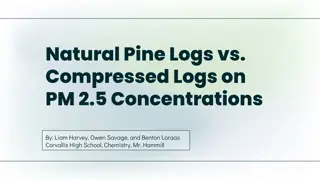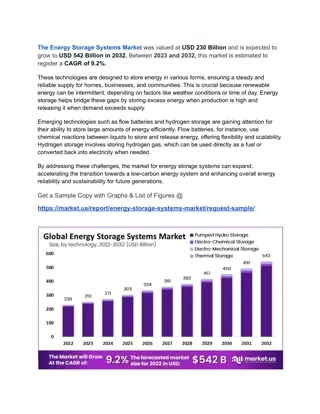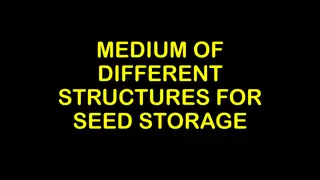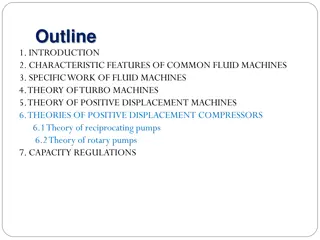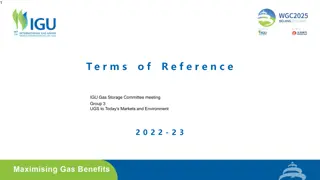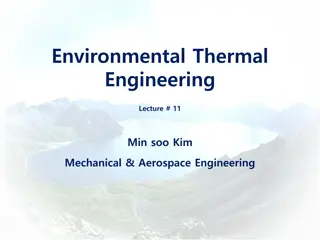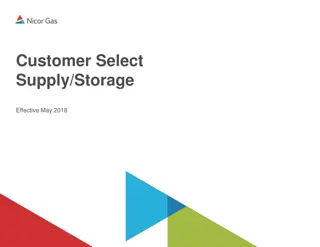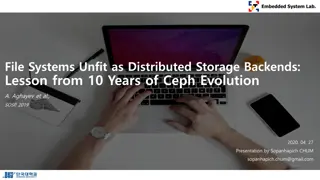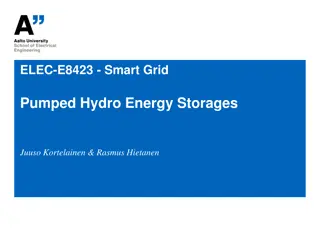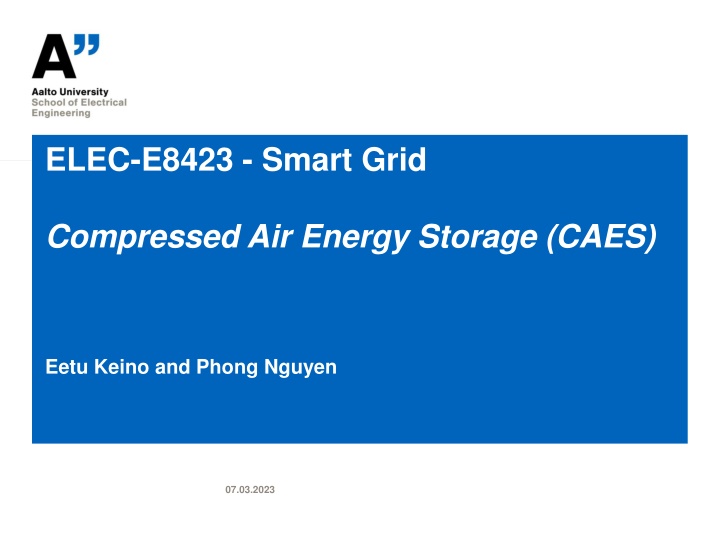
Compressed Air Energy Storage (CAES)
This document delves into the history, technical specifications, suitability, economics, and SWOT analysis of Smart Grid Compressed Air Energy Storage (CAES). It covers the origin of the concept, fundamental aspects, comparison with other storage types, where and when CAES is suitable, economic considerations, and a thorough SWOT analysis highlighting strengths, weaknesses, opportunities, and threats in the realm of CAES technology.
Download Presentation

Please find below an Image/Link to download the presentation.
The content on the website is provided AS IS for your information and personal use only. It may not be sold, licensed, or shared on other websites without obtaining consent from the author. If you encounter any issues during the download, it is possible that the publisher has removed the file from their server.
You are allowed to download the files provided on this website for personal or commercial use, subject to the condition that they are used lawfully. All files are the property of their respective owners.
The content on the website is provided AS IS for your information and personal use only. It may not be sold, licensed, or shared on other websites without obtaining consent from the author.
E N D
Presentation Transcript
ELEC-E8423 - Smart Grid Compressed Air Energy Storage (CAES) Eetu Keino and Phong Nguyen 07.03.2023
Introduction 07.03.2023 Page 2
Outline History Fundamental aspects of CAES Technical specifications Suitability Economics SWOT analysis 07.03.2023 Page 3
History - Concept was found in early 1940 s by F.W. Gay - Was not utilized until late 1960 s, due to lack of storage need in grids - First notable CAES built in Huntorf, Germany in 1978. - Biggest CAES by storage capacity is McIntosh CAES plant with size of 2860 MWh - Research and development in Europe started in early 2000 s - Biggest CAES Bethel Energy Center in Texas (output of 317 MW, capacity 16 000 MWh) by 2025 07.03.2023 Page 4
Fundamental aspects of CAES 07.03.2023 Page 5
Technical specifications and comparison Storage type Energy density (Wh/dm3) Power rating (MW) Storage duration Lifetime of storage Discharge time Cycles CAES 2-6 >300 Hours to months 20-40 years 1-24 hours 10 000 PHS (Pumped hydro storage) 0.5-2 30-5000, dependent on height Hours to months 40-60 1-24 hours 10000- 30000 07.02.2018 Page 6
Suitability Where? Underground salt mines, hard rock caves, or porous caverns. When? Integration of variable renewable energy (VRE) Demand Side Management Smart Grid 07.03.2023 Page 7
Economics Power capital cost ($/kW) Energy capital cost ($/kWh) O&M cost Cost for power related components Cost for energy storage related components 400-1000 2-120 0.003 $/kWh 350 $/kW Salt cavern: 1 $/kWh 19-25 $/kW/year Hard rock cavern: 30 $/kWh CAES are costly projects, but the advantages such as negligible losses, high capacity and low cost per kWh makes it lucrative energy storage system, if the cavern already exists for it. 07.03.2023 Page 8
SWOT Analysis Strenghts: CAES has a high generation capacity and high storage capacity, with low cost/kWh. Weaknesses: Very dependent on location, requires a cavern that either has to be a natural cavern or a built one. Usually not beneficial to build a cavern, since it costs so much. Opportunities: Future possibility of Advanced Adiabatic CAES (AA-CAES), which does not require any fuel (natural gas) to heat up the air, since it has a separate thermal storage that can be used during expansion. Threats: Dependent on natural gas as an energy source for re-heating cooled air to the generator. Natural gas price is a major factor in the CAES economics currently. 07.02.2018 Page 9
Conclusions List three most important key points of presentation here Suitable for long term applications of energy storing - High investment costs but low expenses in usage - Enables the usage of Smart Grid, when excess VRE can be - stored to the CAES 07.03.2023 Page 10
Source material used Hossain, Eklas & Faruque, Hossain Mansur Resalat & Sunny, Md. Samiul & Mohammad, Naeem & Nawar, Nafiu. (2020). A Comprehensive Review on Energy Storage Systems: Types, Comparison, Current Scenario, Applications, Barriers, and Potential Solutions, Policies, and Future Prospects. Energies. 13. 3651. 10.3390/en13143651 Wu, F. B., Yang, B., & Ye, J. L. (Eds.). (2019). Grid-scale energy storage systems and applications. Academic Press. Wang, J., Lu, K., Ma, L., Wang, J., Dooner, M., Miao, S., Li, J., et al. (2017). Overview of Compressed Air Energy Storage and Technology Development. Energies, 10(7), 991. MDPI AG. Retrieved from http://dx.doi.org/10.3390/en10070991 Dehghani-Sanji, A.R & Tharumalingam, E. & Dusseault, M.B & Fraser, R. (2019). Study of energy storage systems and environmental challenges of batteries. Renewable and Sustainable Energy Reviews. Table 2, Available at: https://doi.org/10.1016/j.rser.2019.01.023 https://www.researchgate.net/profile/Dirk-Van-Hertem/publication/237327418_SWOT_analysis_of_utility- side_energy_storage_technologies/links/00b7d5299f8787d923000000/SWOT-analysis-of-utility-side-energy-storage- technologies.pdf http://www.apexcaes.com/bethel-energy-center 07.03.2023 Page 11
Thank you for your interest 07.03.2023 Page 12


